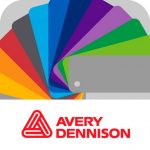
Avery Dennison plans to provide product information through RFID and QR codes
[ad_1]
Avery Dennison Retail Brand and Information Solutions (RBIS) is launching a cloud-based Internet of Things platform Janela Smart Products platform, through which users can scan EPC Gen 2 or NFC RFID tags, or QR codes to receive related product information. The system will use tags provided by Avery Dennison and software developed by EVRYTHNG. The software will bind the label’s unique identifier and product-related information (such as: date, manufacturing location, etc.).

Avery Dennison’s goal is to bind 10 billion product identifiers and information on the Janela platform in the next three years.
Avery Dennison RBIS VP and General Manager Deon Stander said: “We launched the Janela system for two reasons. First, the company predicts that the Internet of Things will provide companies with a significant opportunity for consumer product interaction.” Just like RFID technology can Just like providing a unique identifier to a product, consumers will use their smartphones or tablets to learn more about the product before and after purchasing the product. He said: “The second reason is that Avery Dennison has unique advantages in the packaging, retail industry and consumer product labeling, and mobile IoT technology in the apparel industry.”
EVRYTHNG was established in 2012 and has offices in London, New York and Zurich. The company’s CEO and co-founder Niall Murphy said his company provides “smart products” for the Internet of Things. The company has already provided identifiers and related content management products. EVRYTHNG’s software will collect and manage product label unique identifiers, and bind relevant information for consumers, retailers and logistics providers to access. In this way, the Janela system can provide consumer purchase information and provide inventory and supply chain visualization information.
Murphy said: “Avery Dennison is connecting to the Janela platform to produce labels and packaging. The focus of EVRYTHNG is to manage hundreds of millions of identifiers.”
Stander pointed out that the system uses a variety of technologies, including EPC Gen 2 passive UHF RFID embedded, high-frequency 13.56 MHz passive NFC RFID tags and QR codes. He said: “We provide a variety of possibilities, this is because manufacturers will use a variety of technologies to mark products.”
Smartphones can read NFC tags; however, few brands use NFC tags to mark products. In terms of inventory tracking, EPC Gen 2 UHF tags are becoming more and more popular, but smartphones and tablets are rarely equipped with UHF RFID readers, so it is difficult for consumers to read these tags. The QR code can be printed on the label, and consumers can use the mobile phone to scan, but compared to NFC or EPC Gen 2 tags, the reading of the QR code is slower.
Stander said that he expects these three technologies to support 10 billion products in the Janela system. However, he cannot predict the proportion of EPC Gen 2 or NFC RFID tags used.
Avery Dennison will work with customers to manufacture tags or packaging (including QR codes, NFC or EPC Gen 2 RFID tags) for identification. These unique identifiers will be stored in the Janela cloud server and bound to product-related information. For example, in-store employees and logistics providers can read the data in the supply chain and use these data for tracking.
Retailers can also connect to the Janela system to view product data, and consumers can use Janela ID to view product-related information or brand information. This information can also include washing and maintenance instructions, information about manufacturing conditions, or fabric types. Some consumer-oriented applications can also provide additional services, product reorder options, identification certificates or related recommended products. Avery Dennison is working with several clothing brands to identify products through EPC UHF, NFC RFID tags or QR codes.
Stander said: “Our goal is to ensure that there are 10 billion products available within 3 years. RFID will be an important part, but the proportion is unpredictable. In addition to the clothing industry, the Janela system can also be used in other types of products.”
Stander expects that multiple brands will soon conduct trials and develop more applications. He said: “I am very excited about this, which will build a bridge between consumers and brand owners.”
(Exclusive manuscript of rfid world network, please indicate the source author for reprinting!)
[ad_2]



